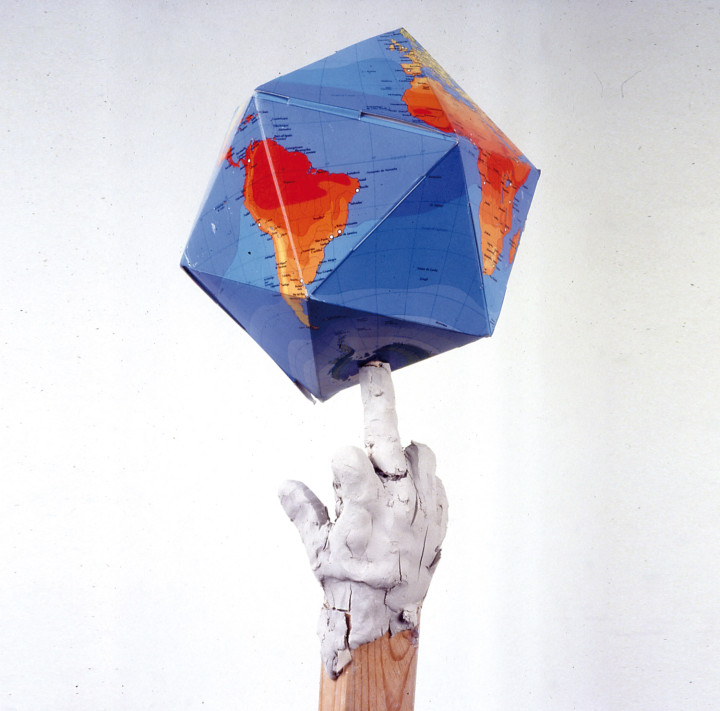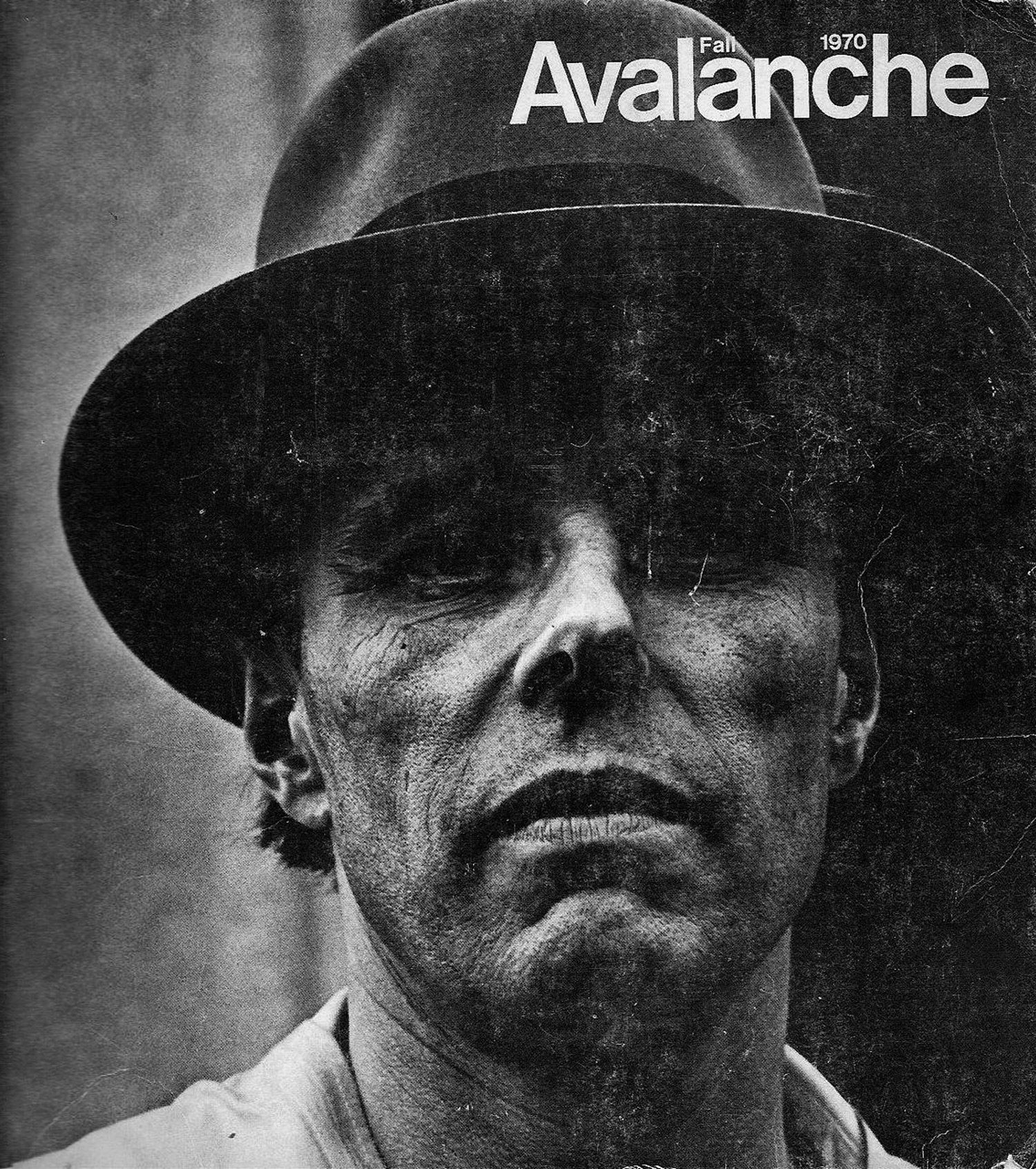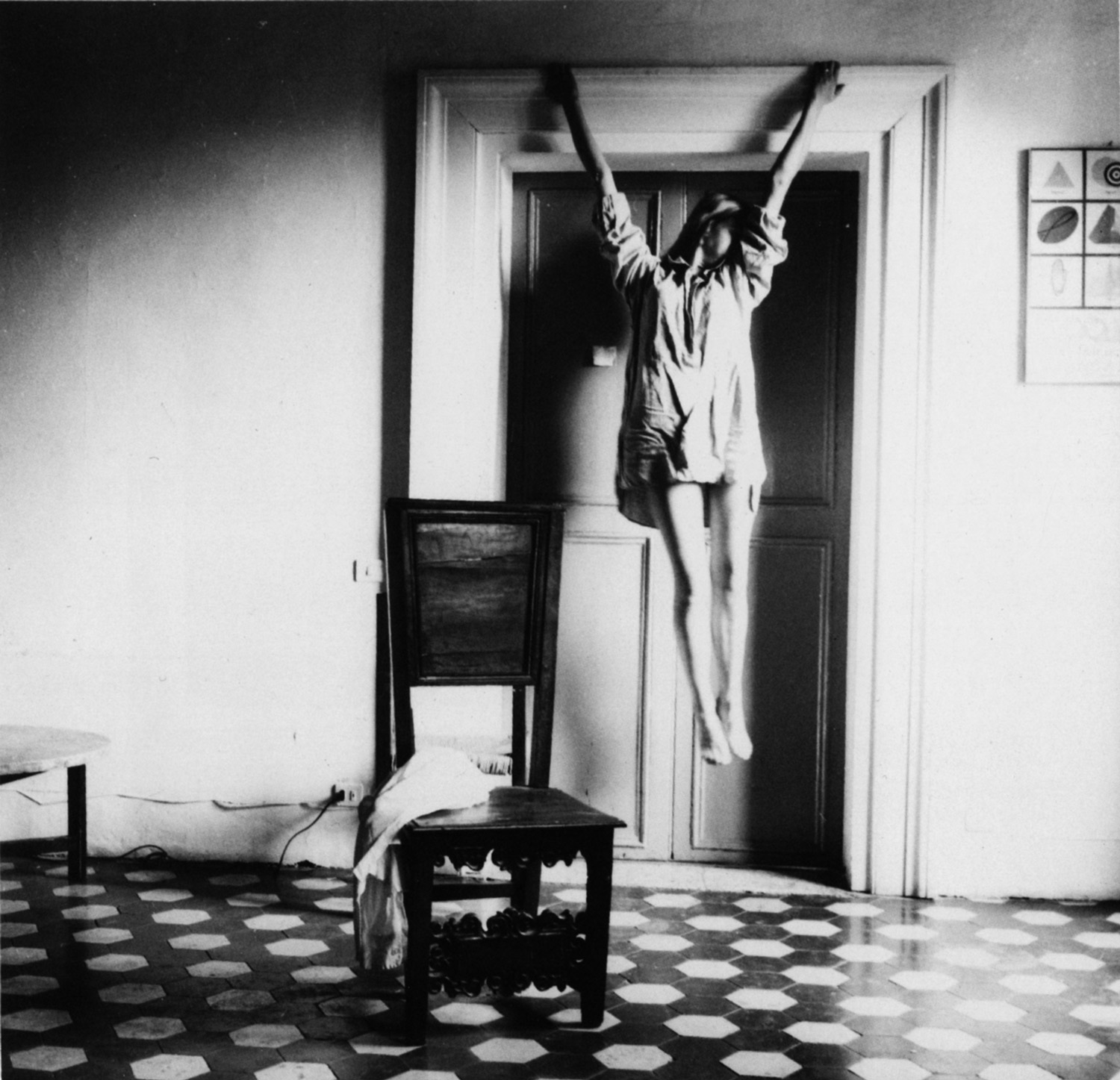
Sonia Campagnola: I was at the China Art Objects booth in London, the gallerist opened a folder in his computer labeled with your name and an endless list of images appeared. I was surprised to realize the quantity of work you have accumulated. Do you consider yourself an artist that produces a lot?
Eric Wesley: Yeah, I think I am very productive, and what is eventually realized is a small fraction of the ideas, and what is seen is a small fraction of that small fraction. I don’t pay attention to keeping a tight studio. What sucks is the same few things are always shown. And what is even worse is when it comes to written material. I’d read something someone wrote, which misrepresented the work, and when the next thing is written you can tell the person just read the previous text and cut and pasted it almost literally. This creates a snowball effect, you know when a snowball runs down a hill and gathers a mass, by the time it reaches the bottom it is a real treat…
SC: I imagine your studio filled with things, junk, various objects. Would you say collecting things is inspirational for you?
EW: I’m often lazy and sloppy but I do aim to put out a somewhat polished product. I’m not interested in the raw and grotesque pack-rat thing. On the other hand I think the cold, clean, inhuman quality is problematic too. Things should look like you know them. So, things around, material around are not really an inspiration more than a problem. Sometimes I work with stuff around, just grab something and attach it to something else and I’m happy that it will soon be out of my environment — this is also a good reason to have things you like around…
SC: So, speaking of collections… how do you like art collectors?
EW: Hate ’em… naw, just kidding, love ’em. No, seriously, I have a friend in LA, Kyung; he’s not rich, he’s a normal job-having guy but he is into art and I always introduce him as my collector friend. He owns a de Kooning, and has works from some friends of mine but he has supported me for years. Another friend of mine in LA is Lonnie Blancard. He is a lawyer by trade and also into real estate. We came to something like, “let’s do a trade” and I think Lonnie and I see eye-to-eye. I’m into the bartering system… Fix my teeth and we can hang this painting in the office or something. A lot of doctors and lawyers in the game. It’s inspiring, it makes me want to produce something worthy of joining their professions.
SC: And what about Franz Ackerman? You were working on a project for him, weren’t you?
EW: Franz is a good friend of mine; he supports my work in another way, in a real personal and collaborative way. About future projects for and/or with Herr Ackerman there’re some ideas out there… Franz did the first lecture at MSA, the school I’m involved in, in LA.
SC: Do you have a studio in LA or in Berlin? And how is it being an LA Berlin-based artist?
EW: I have a studio in Berlin; I feel like I’m on a mission there. I would say 80% of my ‘business’ is in Europe. I have always had an unorthodox life/work situation, now I’m just doing it in two different cities; 6 months LA, 6 months Berlin — that’s the plan. There are so many artists in Berlin. You can’t throw a rock in Mitte without hitting an artist. I don’t feel special here in Berlin… don’t know if that’s good or bad. In LA, I was the only ‘artist’ on my block for sure and I thought of myself as just another person in the neighborhood but with a different job. I remember likening myself to the discipline of neighborhood drug dealers or prostitutes or the drunk guy at the liquor store… getting paid to shut up. In Berlin everybody is an artist and makes a living on government money, parents, stipends, grants. It’s just a different thing.

SC: How do you think LA and its culture enter or frame your work?
EW: I love LA and ideas generate from there. You can’t fade LA. But when it comes to art I tend to think in a more universal way. LA reminds me of things like survival, science and style. I truly believe that myself and the city have both developed as a result of a convergent and at the same time divergent evolution. The divergent evolution began at UCLA, as I stumbled onto this amazing art program. These teachers really meant something to me, Richard Jackson and Paul McCarthy especially.
SC: Thinking of father-artists, your name is often associated with ‘institutional critique’ artists…
EW: Being considered an ‘institutional critique’ artist makes me feel so misunderstood. I feel like, “I should have never said that joke in the first place.” Institutional critique is way too serious and noncommittal at the same time. It has no humor, no comedy. To see David Hammons work as institutional critique just makes things way too easy. Often my work is called also ‘prankster.’ At first I disliked it, but I have since warmed up to the term, it’s better than ‘institutional critique’ anyway.
SC: Most of your works have an ironic nature indeed, often connecting pop culture with classical sculptural elements, sometimes in evident ways such as in Kicking Ass (2000) or Silverlake Tub (2000) or FTW (2004) (the globe sustained by the middle finger), and other times in a more subtle way, like in Outer Space (2004)…
EW: I think irony, sarcasm, that kind of mean-spirited stuff needs to be part of a greater comic pursuit. I like to use comedy, jokes, raw entertainment. I like the idea of talking about Kicking Ass as irony. Actually the kicking legs of the beast were designed to impact the chest of an average-height adult human. So really it’s ‘body critique’ here… The Outer Space piece was one of a series of the Carrom boards that I made (Carrom is a popular game for children in US). These painting/sculpture/performance objects were part of a greater project called The Pico Youth Center (PYC); this was a fully functional, although underground, youth center… I was both counselor and troubled youth. Sometimes friends would come by and play Carrom. There is irony in how and why the Carrom boards were made, but the theme in Outer Space was simply the nature of space.
SC: Which of your recent works do you consider the most demanding?
EW: The Audi piece. I showed it at Meyer-Reigger last June. The main element was a slowly rotating platform, the kind of turntable that in car dealerships shows off the car, with a lone hubcap on it spinning very fast in a perpetual centrifugal action. The smell of peeled out tire rubber filled the air; in this sense it is a ‘smell-sculpture.’ In this sculpture the ‘sculpture’ does not exist. The pedestal becomes the work and the smell in the space takes form. I am concentrating on ideas that can take form by not laboring on them. One dimension of this work is expressed by the title: it relates to the physical object, the Audi 5000 car, but it’s also an adoption of the slang term for people parting ways, ‘outtie,’ which means “I’m out of here.” Another good term is ‘ghost.’ If you say “I’m ghost” it means ‘bye.’ It’s interesting to think two people can be talking and exist as one, and then they part ways and become two, just waves of each other. It’s the idea of the otherness literalized. I wanted to formalize this thought and make a comment on the discipline of sculpture. This was the last large-scale thing I made… The trick then is getting the viewer to invest and construct things themselves.
SC: In this work you also concentrated on a time problem…
EW: Yes, there’s a time discrepancy between the two overlapped spinning objects. I want to take a photograph of this piece, titled This is the last thing I will ever say… part 1. It’ll be a time-lapse image of the turntable making one full revolution, a circular black mass turning very slowly, and the hubcap spinning and burning a light pattern onto the print… spiraling in time in an elliptical orbit.

SC: The “Audi” show also included several paintings. A lot of your work is painting, and each time it takes a different shape: canvas, writing, expanded painting… It seems you want to question the status of both sculpture and painting.
EW: I don’t like labeling; it’s non-progressive. I like what the Hip-Hop Nation has turned into, the entrepreneur mindset, even if the end result is uninteresting… J-Lo’s perfume or Lil Jon’s Crunk Juice, all the clothes, music, Snoop Dogg has a porno production company… This is also why I like Leonardo da Vinci. He made these great pictures for rich people and churches and at the same time designed weapons for governments and did other work in the invention department. That is the point in entrepreneurship that really turns into art; it’s not like you make art, express yourself and then market it and enter the business. That’s what artists like Jeff Koons and Warhol do and I think this is less interesting. No, I think the true beauty lies in the opposite direction, arriving at the point where you are your own client. But to answer your question, I just do what I feel; it is only on the economical side that things get categorized anyway.
SC: Can you give some examples?
EW: I did a show in Amsterdam a couple years ago and what I did is I took these panels I made for a work at the Whitney Biennial and showed them as paintings. I designed half-scale sets for a reality TV show I was planning on producing at the height of the ‘reality show movement.’ I love the tacky, suburban feeling, the fake high-design matter these producers churn out. The frosted glass and aqua-blue plastic and ceramic kitchens and ‘modern’ and ‘progressive’ co-ed bathrooms, Ikea-living situations. There’s something evil and repelling in this but there is also a comfort. My sets were really pushed into this mode of aesthetic and I think they functioned as sculptures. So I simply took the 3D ‘real’ form, found the crease and flattened it out, removed the ‘furniture’ and retitled the work as painting. I made a blue screen, did some ‘actions’ wearing a blue suit so I became invisible and digitally fused the resulting non-image onto a still shot of these ‘readjusted’ paintings. So, for example, on the video you would just see a cigarette smoking and getting smaller on its own against the backdrop of a waiting room. This show was painting, sculpture, design, performance, video, film, drawing and anything else you can think of.
SC: That makes me think of all your, say, ‘extracurricular activities.’ For instance, I’m interested in the book you’re working on…
EW: I started writing a romance novel. The idea now is to rent a hotel room in Manhattan Beach to finish it. The title is either The Manhattan Beach Project or Los Alamos Lovers so there’s a clue as to what it is really about.
SC: Finally I would like to ask you about failure and success. These are two terms to which you return regularly, as in You say tomato, I say tomato (2006) or in 33.333 (2006), the work your made for your solo show at MOCA…
EW: I instinctually like the concept of failure: it’s easy and natural and you can’t beat it. The MOCA show was designed to be a ‘thesis show’ and the physical rendition of the thesis became a kind of puzzle. You know how the discipline of physics is encoded in calculus? It was a matter of dealing with objects, assigning value to variables, balancing equations. I don’t know if anyone including myself would even engage the work that way, but to see this kind of brain fart should at least be a fleeting moment of entertainment. One method for constructing this equation revolves around the idea of people expecting a ‘success’ or a ‘failure,’ almost as a kind of humorous anxiety, which is both fascinating and scary. To relieve this anxiety is my job…





